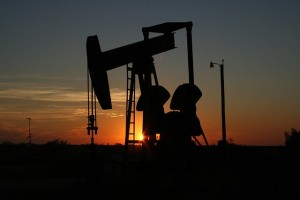 Other than water, perhaps no other liquid resources are as necessary to our way of life as oil and gas. As worldwide demand for fossil fuels increases due to the growing technological advancement in the developing world, oil companies are being forced to increase production efficiency and look for wells in more and more unlikely places – beneath shale rock and in sea beds miles from any shore.
Other than water, perhaps no other liquid resources are as necessary to our way of life as oil and gas. As worldwide demand for fossil fuels increases due to the growing technological advancement in the developing world, oil companies are being forced to increase production efficiency and look for wells in more and more unlikely places – beneath shale rock and in sea beds miles from any shore.
Liquid level sensors for tank level monitoring, fuel and chemical injection and other applications have all been crucial to the continued advancement of the oil and gas industry.
Liquid Level Sensors in Hydraulic Fracturing
Hydraulic fracturing, or “fracking” as it’s commonly known, is a form of oil and gas extraction in which water is injected at extremely high pressures into underground rock formations to widen fissures. It seems self-evident that accurate level sensing would be a necessary function of an industry that uses water to extract liquid resources, but in 2010 state regulators in Pennsylvania found a leak in a series of tanks that held wastewater from fracking sites across the state. While the leak went undetected, barium, strontium, and chlorides leaked into a nearby source of drinking water. This tragedy could have been prevented with even a simple tank level sensor, and indeed government regulators required the company to include remote, continuous liquid level measurement (with low-level alarm triggers) in all their permanent production tanks across Pennsylvania and West Virginia.
This incident and its aftermath are illustrative of the important role that accurate liquid level sensors play in the safety of continuing oil and gas operations across the country.
Multilevel Sensors for Oil Separating
In most oil drilling operations, crude oil pumped directly from the borehole is mixed with water, gases, and sand to separate in a special tank. Knowing the individual levels and boundaries of each substance is critical to the overall production process.
By using knowledge of each substance’s specific gravity, one or more customized level sensors can be added to the tank apparatus in order to provide continuous point-level monitoring for workers and engineers (substances with lower specific gravities will float on top of those with higher ones).
Other Common Applications
While these are two significant examples, there are countless more liquid level sensing applications in the oil and gas industry. From storage tank monitoring to hydraulic fluid and chemical injection controls, accurate sensors are critical for almost every step of the process. SMD Fluid Controls has a number of level sensors ideal for any of these applications, including corrosion-resistant level switches, non-contact ultrasonic models, and more.





